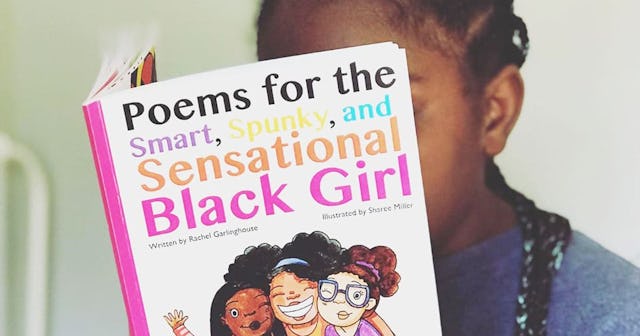To Teachers Who Are Choosing To Be Racially Inclusive: Thank You

“I want to show you something,” one of the preschool teachers at my youngest child’s school said to me as I was dropping off my daughter. She ushered us into her classroom—one that was slowly filling with chatty four- and five-year-olds—and gestured toward one of the many toy shelves. There, in a perfect line, were four realistic looking baby dolls—one white, one Asian, one Latinx, and one Black.
I immediately lit up with joy. “These are fantastic,” I told her, picking one up for closer examination. My three-year-old picked up another, cradling it in her arms. The teacher was beaming, as was I. Because we both understood that representation matters a lot.
Since becoming a mom over 11 years ago—as well as becoming a multiracial family—I have long advocated for diversity in every space. This includes making sure that the toys, books, music, art, and movies our kids have to choose from are inclusive and positive. For far too long, characters of color were stereotyped and relegated to being the cool sidekick or the villain rather than the main character and hero of the story.
Some have clapped back at me that it’s “just” a doll or “just” a cartoon. These individuals are always white and I know what’s going on. Talking about race and seeing a person of color in a starring role forces them to confront their white privilege, whether they know the term or not. When you’re used to being top dog—the main act—getting bumped from that position can be unnerving.
Since my children were very little, they have pointed out people, characters, and toys that look like them. A popular phrase they use is that someone or something is “brown like me.” Humans naturally gravitate toward similarity, which is why difference can be so uncomfortable. However, in our family, where both black and white co-exist, we see difference as something to be acknowledged and celebrated. But it doesn’t stop there. We feel that race must be represented.
For all children, their whole world is their family, their school, their extracurriculars, and what they see and play with. Their world is small, so parents and educators have the responsibility of making sure that the child’s world reflects appreciation for diversity. Otherwise, kids grow up believing the world is just one way—the way they are used to. All kids benefit from learning about other cultures, traditions, and histories.
Last year when sitting in an IEP meeting for one of my kids, one of the educators was showing me a visual task chart she’d created for my child. She added that she was creating a brown hand that my child could move from task to task. I let her know how much I appreciated that since for many years, all the clip art that teachers commonly used on their handouts and worksheets only featured white children.
During the past several school years, I’ve noticed the inclusion of people of color in history lessons, art projects, and book studies–year-round. Teaching is expanding beyond just Martin Luther King, Jr., thankfully. Though I appreciate that some schools and classes acknowledge Black History Month, for example, it’s more important to celebrate black history every month—since my kids are black, and their history matters every day, not just in February.
I’m so thankful for all the educators who are conscious of the long-standing tradition of excluding children of color in favor of the white “norm,” as well as rejecting texts that rely on racial stereotypes. White kids are so used to seeing themselves reflected in the toys on store shelves, books, princess and superhero animation, and advertisements that it’s shocking in our contemporary culture to see kids of color represented. Meanwhile, many of us who are parenting kids of color are cheering, because it’s about damn time that they have more than one option—if they even have an option at all.
When my oldest was a baby, I was adamant that we have several black dolls in our house for her to play with. Every time we’d visit the store shelves, I’d see a lineup of white dolls—mostly blonde, but a few brunette—and then a single brown-ish doll with straight, dark hair and either purple (yes, purple) or green eyes. This doll looked nothing like my daughter, and in fact, didn’t look like any child I’d ever met.
Thankfully, those days are fading. Our kids take notice, as do some educators. They’re purchasing skin-tone art supplies such as markers, paint, and paper so that the kids of color are not only included, but welcomed into whatever project is assigned. There are more black-authored books than ever before, and they’re in classroom and school libraries, as well as book fairs. All kids have access to these, not just the ones who are reflected on the pages.
There’s lot of room for improvement, for sure. The work isn’t done, and the journey to inclusion is an uphill battle—one that’s clearly reflected in contemporary politics, court rooms, and even workplace and school hair policies. However, we have to start somewhere and continue to move forward. The small decisions our teachers make to include all children have a big and lasting impact on all kids.
This article was originally published on